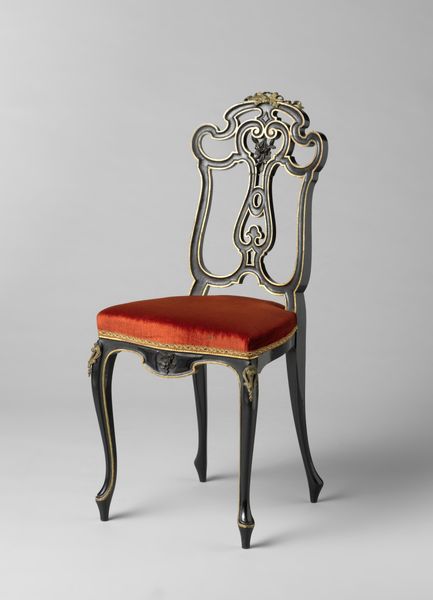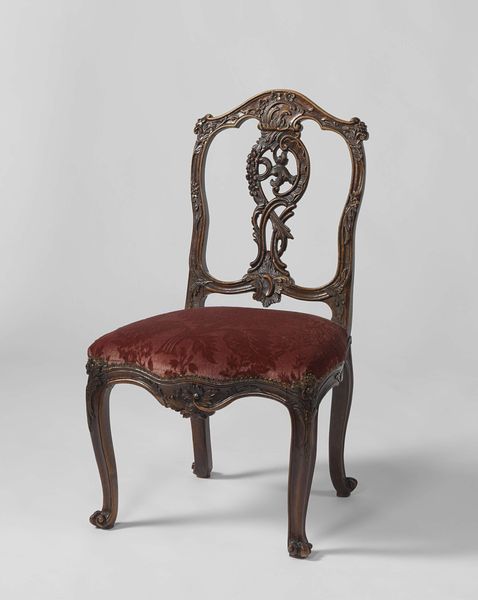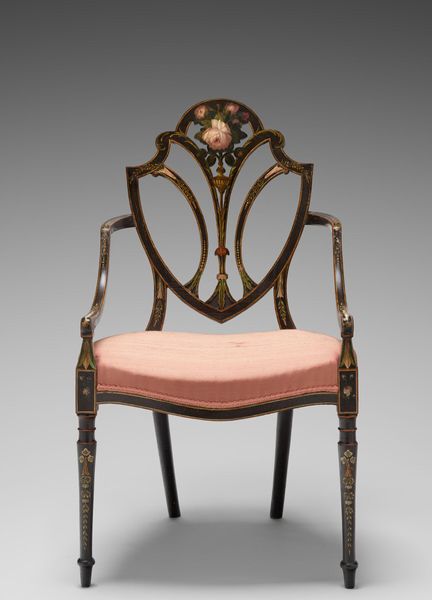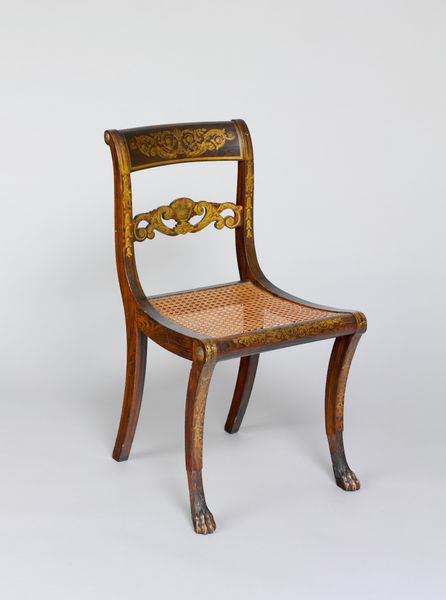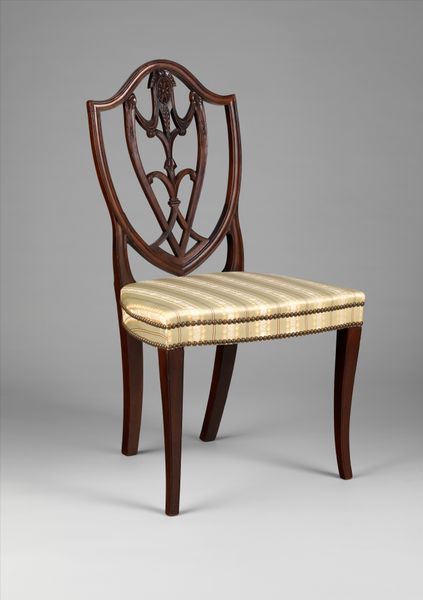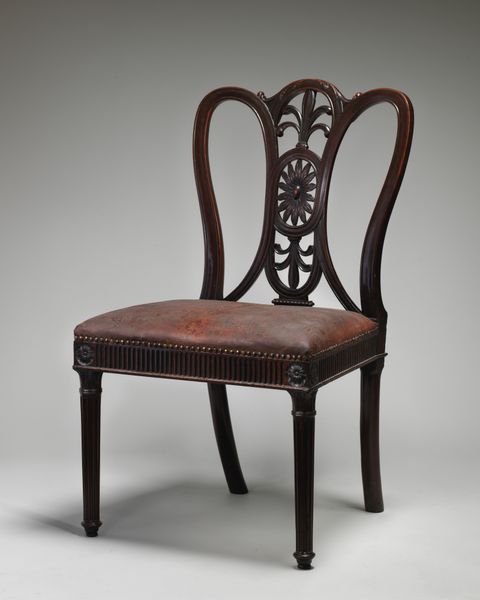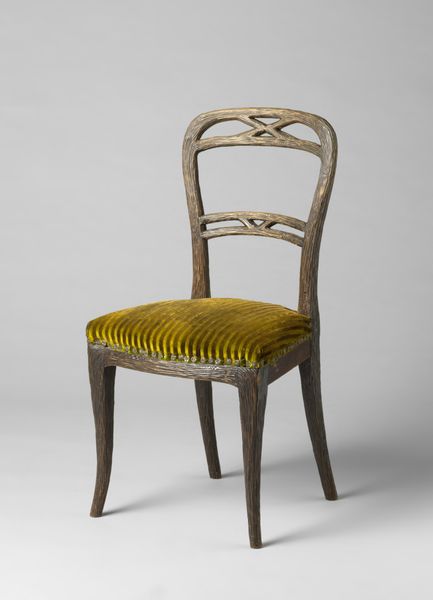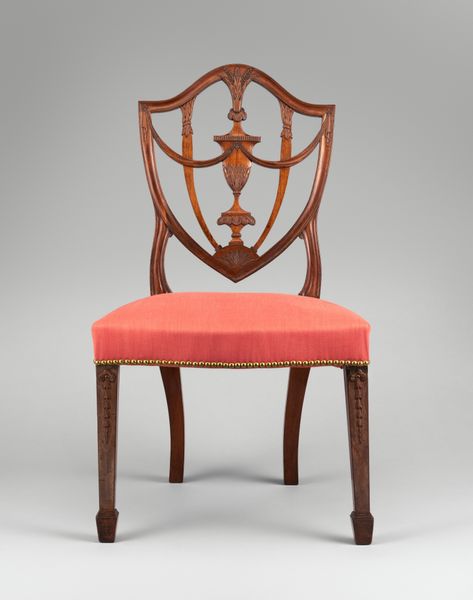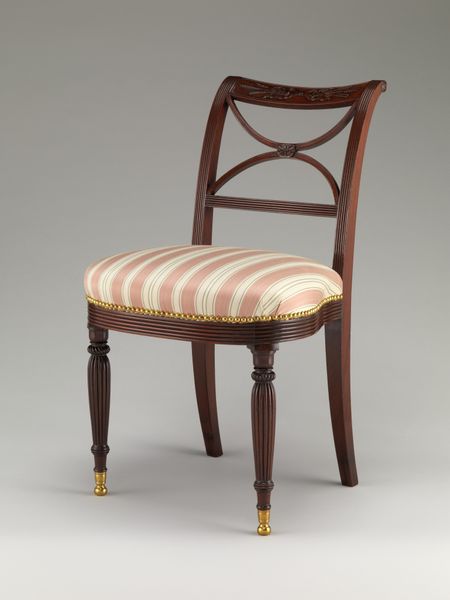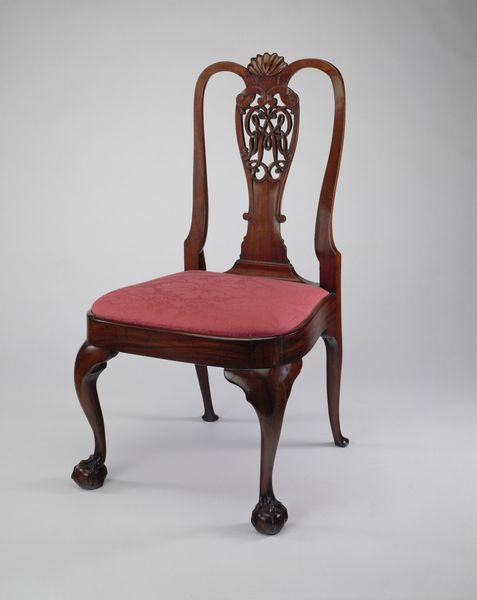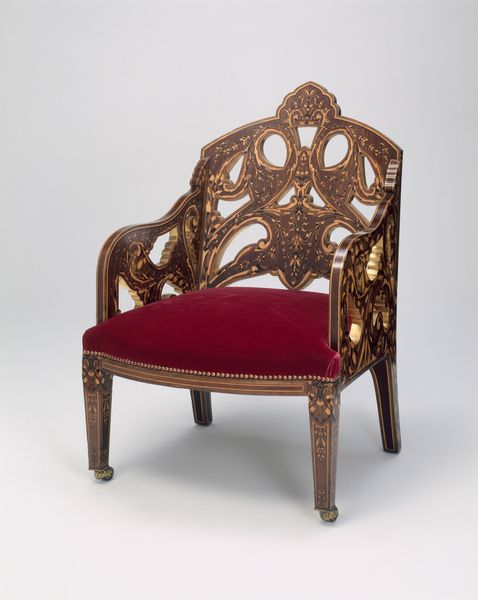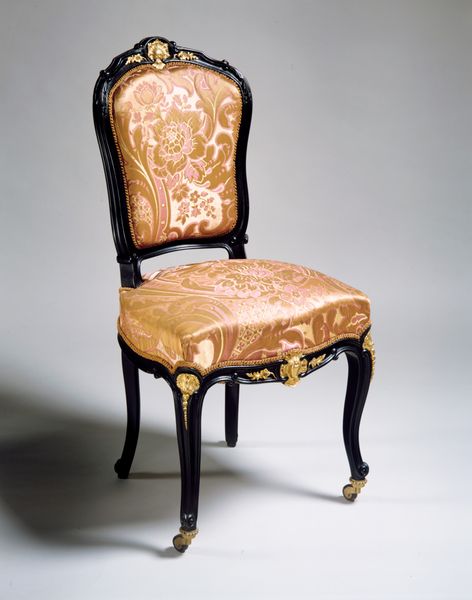
Stoel, afwisselend glanzend en dof zwart geschilderd en versierd met vergulde randen en enkele goudkleurige beslagstukjes. Bekleed met oranje velours. c. 1865 - 1875
0:00
0:00
Dimensions: height 94.5 cm, width 45.0 cm, depth 41.0 cm, height 48.5 cm, depth 37.0 cm
Copyright: Rijks Museum: Open Domain
Curator: This chair, made by Gebroeders Horrix around 1865-1875, really makes you consider the nature of value itself. Editor: Yes, this chair is striking, with its alternating glossy and matte black paint, the gilded edges, and that plush orange velvet. It seems to vibrate with opulence! What draws your attention most to it? Curator: The deliberate juxtaposition of materials, especially the 'humble' wood against the opulent gold leaf and velvet, interests me. It speaks volumes about the social context and the means of production during that period. Think about the labor involved in each material – the felling of the tree, the crafting of the wood, the mining and application of gold, the weaving of the velvet. Who had access to such comfort and finery, and who toiled to create it? Editor: That's a very interesting point! I was focusing on the Baroque style, but the mix of materials makes me wonder about how furniture production was changing then. Curator: Exactly. Consider the division of labor in workshops at that time. Were these Horrix brothers personally involved in every step, or were they orchestrating a team of artisans, each with specific skills? Also, what does the choice of a seemingly "outdated" Baroque style say about their clientele? Were they catering to a specific nostalgic desire? Editor: So you're seeing this chair not just as a beautiful object, but as a kind of historical document reflecting production and consumption at that time. Curator: Precisely. The chair challenges this supposed divide between "high art" and mere craft. We must examine it in its totality; in all its materiality. Editor: I never thought about furniture like that before. I was so caught up in its aesthetic value! Now I see how its very existence tells a complex story. Curator: And that, my friend, is the power of engaging with art from a materialist perspective.
Comments
No comments
Be the first to comment and join the conversation on the ultimate creative platform.
